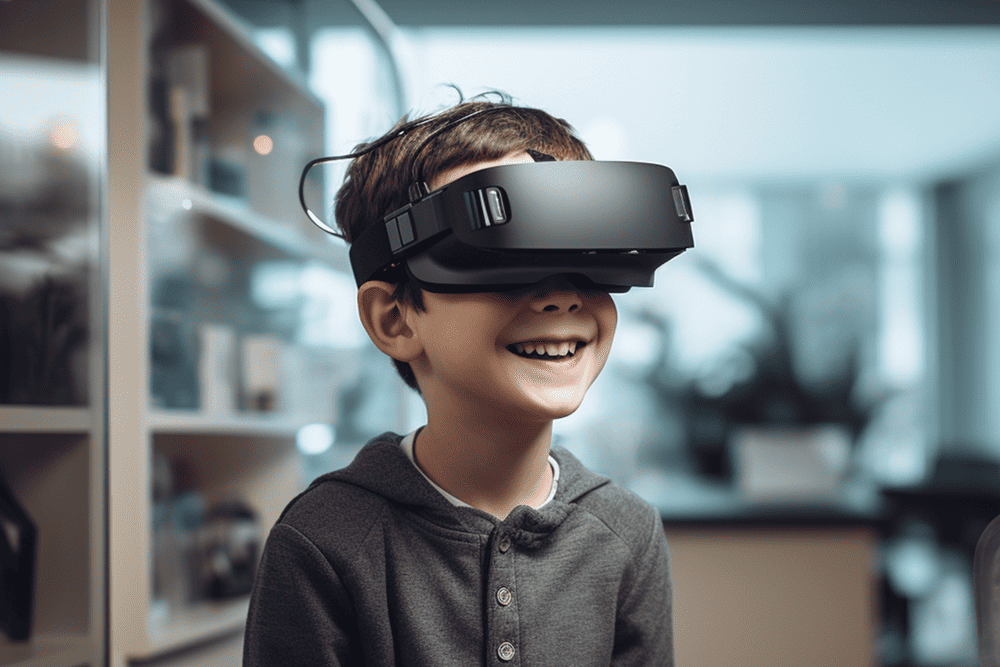Can a VR Headset Treatment Improve Amblyopia?
Commonly known as lazy eye, amblyopia is a vision disorder that usually affects only one eye. The condition most commonly occurs in infants and young children when vision is developing up to seven years of age.
It is a leading cause of vision impairment in children, and according to a meta-analysis, the global prevalence of amblyopia was 1.75%.
Anisometropic amblyopia is the most common type and is characterized by the difference of focus (refractive error) of both eyes. That leads to chronic vision blurring in one eye.
A lazy eye develops when the brain fails to recognize sight from the amblyopic eye. The faulty recognition makes the brain rely more on the stronger eye, which gains strength over time, while the weaker eye continues to weaken.
If left untreated, it can lead to permanent blindness. Studies find that amblyopia is a significant contributor to corneal blindness in school-going children.
Virtual reality headsets like Oculus Rift amblyopia are becoming a viable treatment strategy for amblyopia and have shown promising results in preliminary studies.
Conventional Treatment Strategies for Amblyopia
Treatment for amblyopia must start early, preferably before the age of seven. Delaying treatment could result in the child developing lifelong poor vision. The most prevalent ways of managing amblyopia in children include:
Patching the Dominant Eye
The ophthalmologist places a patch over the dominant eye, forcing the brain to use the weak eye while restricting the use of the stronger eye. The child must wear the patch for several hours, which may be uncomfortable. The forced reliance of the brain on the weak eye leads to improvement in symptoms.
Atropine Drops
Eye patching is usually paired with atropine drops for superior results. The drug is potent in improving vision, but its use is limited due to side effects.
Why Are Alternative Treatments Needed?
Eye care professionals are now experimenting with VR headsets as a mode of treatment for amblyopia. There are multiple reasons for welcoming the new technology, some of which include:
Poor Patient Compliance
Eye patching needs better patient compliance. Young patients find it hard to keep the patch on for long periods due to discomfort.
Adverse Effects
Atropine drops are great at enhancing vision, but there are evident side effects. In addition to irritation and eye redness, patients may also experience sensitivity to bright lights and mouth dryness.
Incomplete Results
Even if the patient follows all the procedures properly, there is no guarantee of complete vision correction. Many times, there are incomplete results at the end of the treatment. Therefore, there is a need to explore advanced treatment strategies to manage amblyopia.
Binocular Digital Therapy for Amblyopia
Virtual reality (VR) shows promising results in improving the binocular vision of children. Therefore, these modernized devices can improve symptoms of amblyopia in kids.
Physicians now use virtual reality headsets to correct several disorders and conditions, including:
- Perception training (depth perception)
- Sports Vision
- Reading issues
- Rehabilitation from brain injuries
- Balance training
The software-based games by Vivid Vision on VR headsets have a varied focus on the video (game) in both eyes based on the patient’s specific condition. These devices teach patients to strengthen their binocular vision by using both eyes together.

Using VR Headsets Such as Oculus Rift with Specially Designed Software is Showing Promise to Treat Amblyopia Among Children
Research shows that head-mounted displays of virtual reality headsets are safe and well-tolerated (during short sessions) by amblyopia patients. The only side effect associated is slight visual discomfort. Some studies found it to be an enjoyable experience for the patients.
According to a randomized study conducted at Boston Children’s hospital, VR-headset-based amblyopia therapy improves some visual acuity compared with the baseline. The study participants had failed prior amblyopia treatment and were then treated with binocular amblyopia therapy. This study needs follow on research, but it does suggest that there may be significant benefits.
Oculus Rift amblyopia is a virtual reality headset that has been tested to correct vision issues in lazy eye patients. The head-mounted headset is used for dichoptic visual training (training to use both eyes) in adult patients with amblyopia. According to a study, this type of vision therapy effectively treats anisometropic amblyopia with positive results.
A study conducted in Slovakia reveals that amblyopic individuals who played video games on the Oculus Rift 3D VR headset twice a week showed improvement in the neuroplasticity of the brain. Therefore, you can expect to see betterment in patients’ visual acuity.
Some studies have even concluded VR gaming to be equal (or slightly superior) to patching.
Benefits of Using Oculus Rift Amblyopia
VR headsets like Oculus Rift bring several advantages over traditional treatment strategies for lazy eyes. These include:
Better Acceptance
Unlike patching and eye drop treatments, personalized digital therapy is well tolerated and accepted by young patients.
As per studies, twelve weeks of treatment with VR headsets significantly improves amblyopia symptoms. The adherence to this treatment strategy is higher than other options.
Therefore, timely introducing customized vision therapy for your child can save them from vision impairments and blindness.
Enjoyable Experience
Playing games or watching a tv show or movie on a VR headset is a fun experience, especially for the young. So, it is easy to gain the focus of the child with an Oculus Rift headset. They can develop better binocular vision without knowing that they are undergoing treatment.
No Side Effects
VR headsets do not cause any eye irritation or other systemic symptoms. The only issue faced with the Oculus Rift is increased eye strain which can be easily managed by calibrating the settings and keeping the sessions short.
